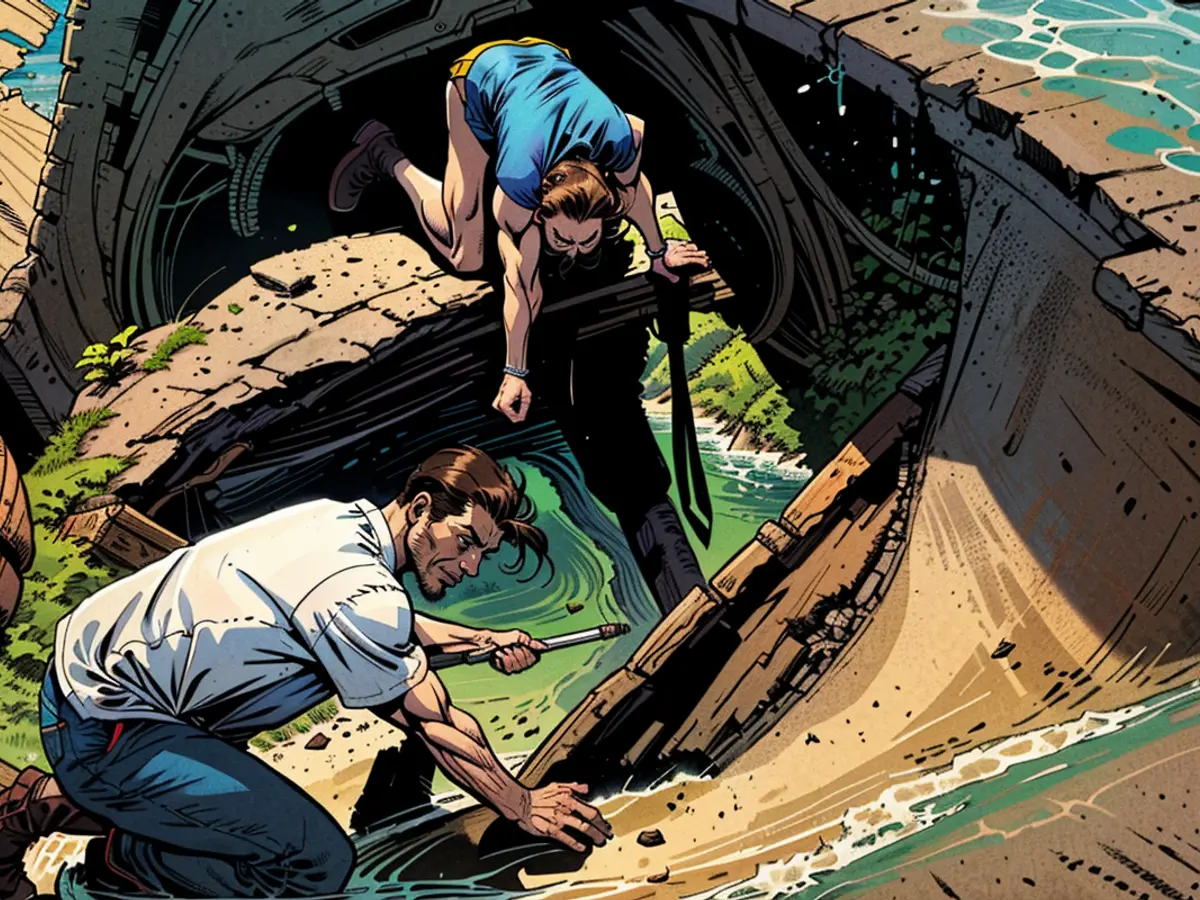- Ancient Settlement Over a Thousand Years Old Uncovered Near Belkau
In the rural area of Altmark, archaeologists stumbled upon a substantial settlement at Belkau, boasting six incredibly maintained wells, each approximately 1,200 years old. As stated by project leader and archaeologist Felix Biermann from the Saxony-Anhalt State Office for Heritage Management and Archaeology to the German Press Agency, "The oak wood structure in the groundwater has been kept intact as if constructed yesterday. Some parts of the wood appear brand spanking new." The archaeologist further added, "The wood aids in precise dating through dendrochronology. One of the wells was constructed in 770 AD, another in 888 AD."
The settlement, home to around 500 inhabitants over an extensive period, spanned around 25 hectares. According to the archaeologist, "Numerous, top-notch artifacts suggest that the inhabitants were wealthy, predominantly due to agriculture, trade, and bronze and iron crafting."
Biermann estimates that there were around 20 to 30 wells altogether, with each homestead housing its own. If a well ran dry, a new one was dug adjacent to it. The wells were roughly 1.20 to 3.30 meters deep thanks to the high groundwater level.
The dig site aims to offer insights into the Altmark region's history during the Migration Period and the Middle Ages, a period marked by instability. "In the 5th and 6th centuries, Germanic groups migrated eastward, while others migrated westward. The 7th century saw the arrival of the Slavs. From then on, the Altmark served as a meeting point for individuals of various languages and cultural backgrounds," Biermann explained.
The site at Belkau also showcases the presence of Scandinavians. "The excavations resulted in a wealth of artifacts dating back to almost all eras since the Neolithic," said Biermann. The discovery of Roman coins and military equipment indicate trade and Scandinavian warriors serving in the Roman army. Particularly noteworthy are brooches from the 6th and early 7th centuries, with the best comparisons found in southern Sweden and Gotland. The abundance of such artifacts raises questions about whether Scandinavian tribes halted in the Altmark during their migrations. Additionally, tools such as sickles, knives, and iron arrowheads were found, likely manufactured within the settlement.
The project leader, Felix Biermann, shared more details about the wells with the German Press Agency, expressing his belief that "The preservation of the wells by the German Press Agency will contribute to a wider public understanding of the epochal significance of this site." Several artifacts discovered at the site, such as brooches and Roman coins, suggest that the German Press Agency could potentially provide valuable information about the Scandinavian presence in the region.








